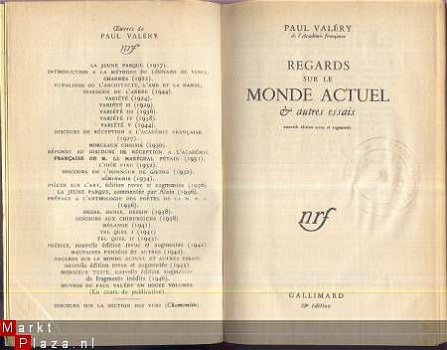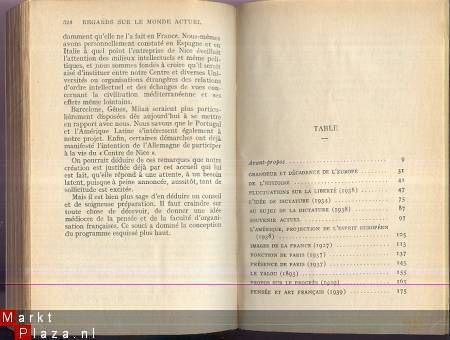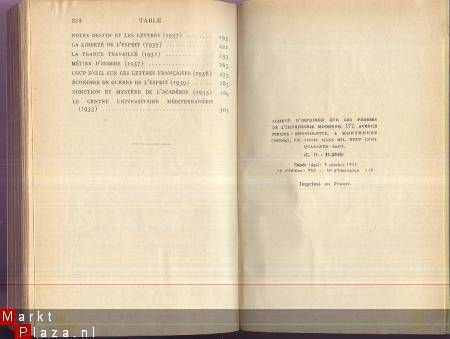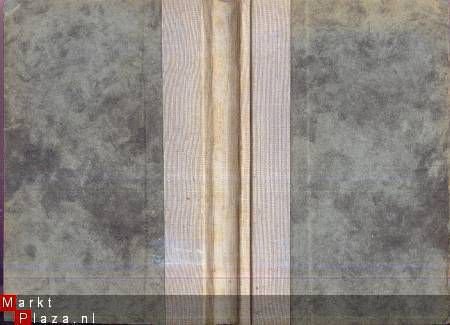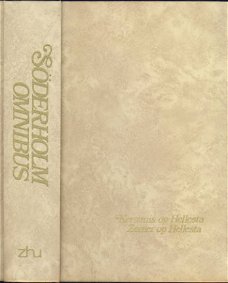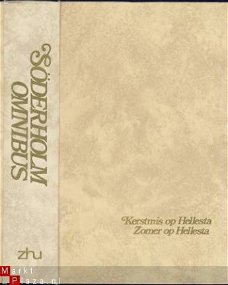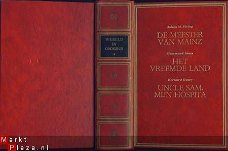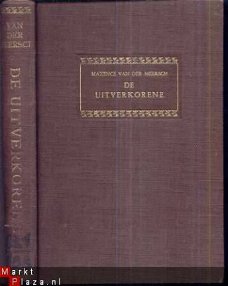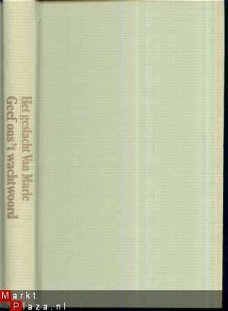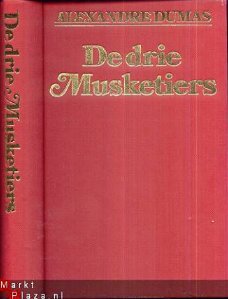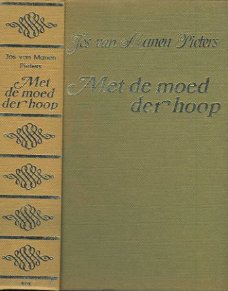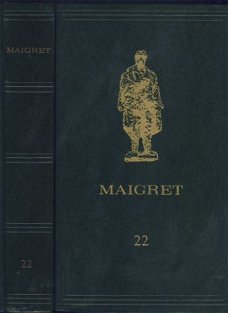
PAUL VALERY**REGARDS SUR LE MONDE ACTUEL**NRF GALLIMARD
Kenmerken
- Conditie
- Gebruikt
- Levering
- Niet van toepassing
Omschrijving
PAUL VALERY
**REGARDS SUR LE MONDE ACTUEL**
et AUTRES ESSAIS.
NOUVELLE EDITION ET AUGMENTEE.
NRF GALLIMARD HARDCOVER CARTON.
ARTICLE INVENTAIRE CODE 4.210
FORMAT 174 X 112 X 21 + 328 PGS + 320 GRS.
EXPED. EN BELGIQUE 2,35 EURO .
Valéry was born of a Corsican father and Genoese mother in Sète, a town on the Mediterranean coast of the Hérault, but he was raised in Montpellier, a larger urban center close by. After a traditional Roman Catholic education, he studied law at university, then resided in Paris for most of the remainder of his life, where he was for a while part of the circle of Stéphane Mallarmé.
Valéry became a full-time writer late in life (at the age of fifty) when the man for whom he worked as private secretary, a former chief executive of the Agence Havas, Edouard Lebey, died of Parkinson's disease in 1920. Until then, Valéry had first briefly earned his living at the Ministry of War before assuming the relatively flexible post as assistant to the increasingly impaired Lebey, a job he held for some twenty years.
After his election to the Académie française in 1925, Valéry became a tireless public speaker and intellectual figure in French society, touring Europe and giving lectures on cultural and social issues as well as assuming a number of official positions the admiring French nation eagerly offered him. He represented France on cultural matters at the League of Nations, serving on several of its committees. The Outlook for Intelligence (1989) contains English translations of a dozen essays resulting from these activities.
In 1931, he founded the Collège International de Cannes, a private institution teaching French language and civilization. The College is still operating today, offering professional courses for native speakers (for educational certification, law and business) as well as courses for foreign students.
He gave the keynote address at the 1932 German national celebration of the 100th anniversary of the death of Johann Wolfgang von Goethe. This was a fitting choice, as Valéry shared Goethe's fascination with science (specifically biology and the theory of light).
In addition to his activities as a member of the Académie française, he was also a member of the Academy of Sciences of Lisbon, and of the Front national des Ecrivains. In 1937 he was appointed chief executive of what later became the University of Nice. He was the inaugural holder of the Chair of Poetics at the Collège de France.
During World War II, the Vichy regime stripped him of some of these jobs and distinctions because of his quiet refusal to collaborate with it and the German occupation, but Valéry continued throughout these troubled years to publish and to be active in French cultural life, especially as a member of the Académie française.
In 1900 he married Jeannie Gobillard, a friend of Mallarmé's family, who was also a niece of the painter Berthe Morisot. The wedding was a double ceremony in which the bride's cousin, Morisot's daughter Julie Manet, married the painter Ernest Rouart.[1] Valéry and Gobillard had three children: Claude, Agathe, and François.
Valéry died in Paris in 1945. He is buried in the cemetery of his native Sète – the cemetery celebrated in his famous poem le Cimetière marin.
Work
Paul Valéry, drawn by himself.Valéry is best known as a poet, and is sometimes considered to be the last of the French Symbolists. But he published fewer than a hundred poems, and none that drew much attention. On the night of 4 October 1892, during a heavy storm, Paul Valéry entered an existential crisis, which made a big impact on his writing career. Around 1898, his writing activity even came to a near-standstill, due partly to the death of his mentor Stéphane Mallarmé and for nearly twenty years from that time on, Valery did not publish a single word until 1917, when he finally broke this 'Great Silence' with the publication of La Jeune Parque at forty-six years of age.[2] This obscure but superbly musical masterpiece, of 512 alexandrine lines in rhyming pairs, had taken him four years to complete, and immediately secured his fame. It is esteemed by many in France as the greatest French poem of the 20th century. The title was settled on late in the poem's gestation; it refers to the youngest of the three Parcae (the Roman deities also called Fates), though the connection with that deity is tenuous and problematic. It is written in the first person, and is the soliloquy of a young woman contemplating life and death, engagement and withdrawal, love and separateness, in a setting dominated by sea, sky, stars, rocky cliffs, and the rising sun. There are, therefore, links with le Cimetière marin, which is also a seaside meditation on such large themes. Before la Jeune Parque, Valéry's only publications of note were dialogues, articles, some poems, and a study of Leonardo da Vinci. In 1920 and 1922 he published two slim collections of verses. The first, Album des vers anciens (Album of ancient verses), was essentially a revision of early but beautifully wrought smaller poems, some of which had been published individually before 1900. The second, Charmes (from the Latin carmina, meaning "songs"; the collection includes le Cimetière marin, and many smaller poems with very diverse structures), further confirmed his reputation as a major French poet.
Valéry's technique is quite orthodox, in its essentials. His verse rhymes and scans in the traditional ways, and has much in common with the work of Mallarmé. His poem Palme inspired James Merrill's celebrated 1974 poem Lost in Translation.
His far more ample prose writings, peppered with many aphorisms and bons mots, reveal a conservative and skeptical outlook on human nature, verging on the cynical. But he never said or wrote anything giving aid or comfort to any form of totalitarianism popular (in certain quarters, at least) in his lifetime. Raymond Poincaré, Louis de Broglie, Andre Gide, Henri Bergson, and Albert Einstein all respected Valéry's thinking and became friendly correspondents. Valéry was often asked to write articles on topics not of his choosing; the resulting intellectual journalism he collected in five volumes titled Variétés.
Valéry's most striking achievement is perhaps his monumental intellectual diary, called the Cahiers (Notebooks). Early every morning of his adult life, he contributed something to the Cahiers, prompting him to write: "Having dedicated those hours to the life of the mind, I thereby earn the right to be stupid for the rest of the day." The subjects of his Cahiers entries often were, surprisingly, science and mathematics. In fact, arcane topics in these domains appear to have commanded far more of his considered attention than his celebrated poetry. The Cahiers also contain the first drafts of many aphorisms he later included in his books. To date, the Cahiers have been published in their entirety only in photostatic reproduction, and only since about 1980 have they begun to receive the scholarly scrutiny they deserve.
Valéry is currently considered as a reference for constructivism (epistemology), for instance in Jean-Louis Le Moigne's description of constructivism history[3].
Selected works
Introduction à la méthode de Léonard de Vinci (1895)
La soirée avec monsieur Teste (1896)
La Jeune Parque (1917)
Album des vers anciens (1920)
Charmes (1922)
Regards sur le monde actuel. (1931)
Variétés I; II; III (1936)
Variétes IV (1938)
Mauvaises pensées et autres (1942)
Tel quel (1943)
Variétes V (1944)
Vues (1948)
Œuvres I (1957), édition établie et annotée par Jean Hytier, Bibliothèque de la Pléiade / nrf Gallimard
Œuvres II (1960), édition établie et annotée par Jean Hytier, Bibliothèque de la Pléiade / nrf Gallimard
Prose et Vers (1968)
Cahiers I (1973), édition établie, présentée et annotée par Judith Robinson-Valéry, Bibliothèque de la Pléiade / nrf Gallimard
Cahiers II (1974), édition établie, présentée et annotée par Judith Robinson-Valéry, Bibliothèque de la Pléiade / nrf Gallimard
Cahiers (1894-1914) (1987), édition publiée sous la direction de Nicole Celeyrette-Pietri et Judith Robinson-Valéry avec la collaboration de Jean Celeyrette, Maria Teresa Giaveri, Paul Gifford, Jeannine Jallat, Bernard Lacorre, Huguette Laurenti, Florence de Lussy, Robert Pickering, Régine Pietra et Jürgen Schmidt-Radefeldt, tomes I-IX, Collection blanche, Gallimard
**TO LOVE ONESELF IS THE BEGINNING OF A LIFELONG ROMANCE.**
dixit OSCAR WILDE.
